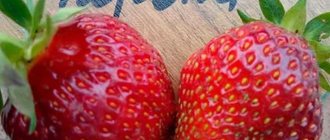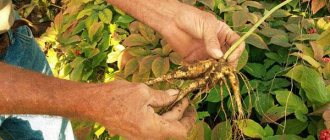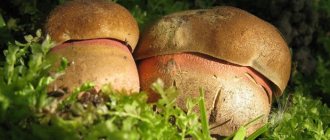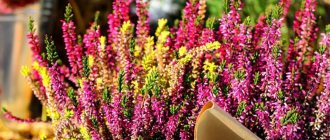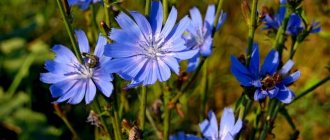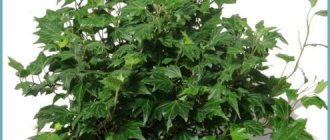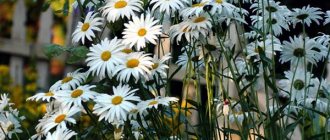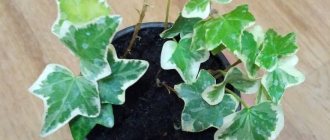To reap a rich harvest of honey, it is important to grow honey plants around the apiary. However, not all owners can sow honey crops or change the location of the hives. Inheriting an apiary farm forces you to be content with what you have or look for ways to transform it.
Experienced beekeepers regularly inspect the vegetation. Most beekeepers downplay the significance of the bruise and honey grass, mistaking it for a weed. The plant grows on dry slopes, ravines, in forest wastelands and in the steppe. It grows near roads, buildings, and in pastures for domestic cattle. Growing on a plot near an apiary will significantly increase honey production.
External appearance of the honey plant
Sinyak is a honey plant that belongs to the Borachnikov family and has an interesting appearance. The growth of a two-year-old crop varies from 1 to 1.8 m. The flowering of the common honey plant bruise occurs in the year following sowing.
The buds have a pinkish tint, which gradually changes to a rich blue color. The flowers of the bruise are large, collected in curls on long stalks. Countless curls in the upper part of the stem form a pyramidal inflorescence in the shape of a spike. The leaves are elongated-lanceolate, sessile. The root system penetrates to great depths into the soil and feeds on minerals.
Blueberry is a honey plant
Despite the benefits of the plant for bees, bruise is an unsafe and poisonous crop. To retain moisture, the honey plant has elongated, rigid spines to retain water. The structure of the foliage allows for a reduction in the expenditure of effort on nutrition and the release of energy for budding.
Blueberry is a honey plant that blooms with the arrival of summer and does not stop until frost arrives. During this period, up to 1500 flowers are formed on the stem. The lifespan of the buds is 48 hours; within two days they produce up to 16 mg of flower nectar. In common people, culture is called differently:
- rannik blue;
- blush.
The change in color serves as a guide for bees and attracts attention. When fertilization occurs, the honey plant turns blue on the second day of life.
Synyak flowering time, honey productivity, temperature
How many days does it take for a bruise to bloom?
In the conditions of the Ryazan region, the bruise blooms from the beginning of June to the end of July 20. In the conditions of Belarus, the bruise blooms in the second half of July and throughout August.
Bruise honey productivity
What is the honey productivity of a bruise?
One stem of bruise produces up to 2000 flowers, one bush produces up to 5000 - 6000 flowers, in general there are 250-500 million flowers per hectare. Each flower lives and secretes nectar for about two days. During the day, the bruise flower secretes nectar from 0.28 to 2.3 mg with a sugar content of 40 - 50%. As a rule, the honey productivity of a bruise is 500 - 800 kg per hectare, which largely depends on the planting method, agricultural technology and weather conditions. Bees very actively visit the bruise to collect nectar and pollen all day long. It has been experimentally established that 4 bees work simultaneously on one square meter of bruise grass one kilometer from the apiary. Even with cold weather, one plant produces 653.4 mg of nectar and 198.6 mg of sugar, which makes it possible to obtain 253.6 mg of honey. The nectar of the bruise is dominated by fructose 71.5%, sucrose contains 23.59% and the least glucose is 4.91%. Under the most favorable development conditions, 1 hectare of buckwheat can produce as much honey as 25 hectares of buckwheat. In the conditions of the Ryazan region, 4-5 bee colonies can be placed per 1 hectare of bruise, which will ensure a good harvest of seeds and honey. One bee colony can collect up to 55 kg of honey from bruise thickets. The weight gain of the control hive reaches 8 kg per day. In Belarus, from one bee colony you can get three stores of bruise honey. In the southern regions, the blueberry blooms in May - mid-June and blooms for 60-70 days. In favorable weather, a bee colony can collect 6-8 kg of honey per day, and on average, a hectare of bruise thickets can produce 300 - 500 kg of honey.
Video bruise fills the bribe-free period
Varieties
Sunflower as a honey plant
There are such garden types of bruise:
- Gray-green bruise is a perennial plant, up to 3 meters high, blooming with blue tubular flowers. Bare erect stem.
- Whitening bruise is an evergreen species of plant, reaching a height of 1 meter. It blooms with blue flowers with pink stamens.
- Italian bruise is a biennial plant, up to 120 cm high. It blooms with light purple or reddish flowers.
- Plantain bruise is very similar to the ordinary one. This is the smallest species, reaching only 30 cm in height. It blooms with blue flowers, flowering lasts a long time, and the plant emits a sweet, persistent aroma.
- Perez's blue is an evergreen species that grows up to three meters in height. It blooms with tubular pink flowers that sit tightly around the leaves.
- Bruise Wildpretta is a biennial, grows up to 3 meters in length, blooms with pink-red flowers.
How to sow a bruise
When to sow a bruise in the spring like a honey plant
Many beekeepers have a question: when to sow blueberry in the spring as a honey plant? In the conditions of the Ryazan region, bruise is sown as a honey plant in the spring and in the first half of summer until July 5-10, so that it has time to get stronger and overwinter. In the first year of sowing, it is important to promptly cut the cover crop at a height of 8-10 cm.
Bruise like a honey plant, agricultural cultivation technology
In the first year of life, the common bruise forms a rosette of leaves and forms a taproot penetrating to a depth of 40-60 cm. For this reason, the bruise is well sown under a cover crop. The cover crop is removed in the first year, after which the bruise forms a dense grass stand and in the second year of life 5-7 stems 50 - 150 cm high grow from the rosette. Grows on almost any type of soil from poor to rich chernozems, but grows very well on rich soils lime. However, the bruise does not like swampy, peaty, acidified soils. Various plants are used as a cover crop; the bruise feels great with any, especially if the seeding rate of the cover crop is reduced by 20-25%, but the bruise works especially well when sown under the cover of barley, oats, spring wheat, phacelia, rapeseed and mustard. The sowing rate for bruise seeds is 6 - 7 kg per hectare. When sowing blueberry as a honey plant for bees, it is better to sow in a wide-row manner, in this case the blueberry plant develops very well, the number of flowers increases by a third. Experiments show that with wide-row sowing with a seeding rate of 3 million seeds per hectare, nectar productivity can amount to 1715 kg of sugar per hectare. When sowing a bruise, the seeds are planted to a depth of 2-3 cm; after sowing the seeds, the soil is rolled. Sowing the bruise is carried out with SZT-3.6 seeders, which allows you to plant the bruise seeds at one depth, and the cover crop seeds at another. If there is no such seeder, then use a regular seeder. In this case, the cover crop seeds are first sown, rolled, and then the bruise is sown across the rows of the cover crop. If the seeds of both crops are small, for example, when sowing a bruise together with phacelia, the seeds are simply mixed and sown with any seeder to a planting depth of 2-3 cm. If a bruise is sown without a cover crop, then the weeds can quickly clog the bruise, in this case it will be necessary to fight them. To obtain bruise seeds, it is removed when 2/3 of the flower cluster on most stems has turned brown; after 6-8 days, when the mowed bruise has dried in the windrows, threshing begins. After threshing, the seeds are poured into bags and stored in a dry, ventilated place, protected from mice.
Why bees like honey plants
Phacelia - honey plant
The blue of the flowers plays a decisive role in the life of the honey plant and attracts hymenoptera. The brightness and beauty of the inflorescences fascinate the bees. The faded color and weak aroma make the flower inconspicuous. Therefore, the flowers turn blue to attract buzzing insects to the honey plant.
Why do bees prefer the common bruise ? Honey plant bruise is preferred by bees. It is included in the top ten popular honey crops.
A distinctive feature of a bruise is the release of nectar under any weather conditions. This feature is appreciated by bees, which do not fly past the bruise during the day. Actively bruise grass honey plant visits at noon.
Dry wind and heat reduce the release of nectar, but not much, compared to other honey crops. In good weather, thanks to the bruise, the bee colony produces from 6 to 8 kg of honey. From 1 plant you get 0.8-2.5 mg of nectar. Honey production from 1 hectare of honey field is 800-850 kg. This figure is significantly higher than that of other honey plants:
- sweet clover – 200-300 kg;
- spring rape – 60-100 kg;
- sainfoin – 100-200 kg;
- sunflower – 25-40 kg;
- buckwheat – 70-100 kg;
- phacelia – 200-300 kg.
Bruise description of the plant as a honey plant
Bruise plant description
Common bruise is a honey-bearing biennial herbaceous plant from the borage family (Boraginaceae), the grass is 30-90 cm high. The stem is erect, up to 90 cm high. The whole plant is covered with hairs. The leaves are lanceolate, 5-10 cm long. The leaves are sessile, linear-lanceolate. The flowers of the bruise are beautiful, small, funnel-shaped, bright blue (pink buds), collected in curls and then in paniculate inflorescences. The fruits are brownish nuts. The bruise grows everywhere in the steppe and forest-steppe regions of Europe, occupying hillsides and abandoned arable lands and meadows. Grows in Kazakhstan and Siberia.
Bruise for beekeeping
Why is a bruise interesting for beekeeping? The flowers of the bruise are large, pink at the beginning of flowering, later bright blue in dense curls collected in panicles. The bruise flower consistently releases nectar for bees, even in very dry summers; the nectar secretion of bruise flowers does not stop in rainy summers, as well as during summer cold snaps. The nectar secretion of the bruise can only be stopped by autumn frosts. Common bruise flowers produce pollen well. Bees are good at collecting blue-violet pollen from a bruise. The importance of bruise for beekeeping is often determined not only by its high honey productivity, but also by the fact that in many regions it blooms after the end of flowering in the gardens, when the fall-free period begins. As a honey plant, the bruise can produce honey in one place for several years (5-8 years). As a honey plant, blueberry can be included in many crop rotations. Thus, the beekeeper can create a good honey base for the apiary at minimal cost. Honey from a bruise can be left for bees as winter food, since it practically does not crystallize in the honeycomb.
Blue honey plant beneficial properties
Blueberry is not only a honey plant, but can be used in human nutrition as an oilseed crop, and also as a rich source of minerals. The bruise is used in folk medicine; the bruise herb collected during the flowering period is used as an infusion of the herb in the treatment of respiratory diseases, as an expectorant and sedative, and is used as a sedative. A decoction of the herb bruise is used externally for rheumatic pain and tendon sprains. The infusion of bruise herb is prepared as follows: pour 10 g of dry herb with 200 ml of boiling water and leave for 15-20 minutes, take 1 tablespoon 5 times a day. A decoction of the bruise herb as an external remedy - 10 g of dry herb is poured into 200 ml of boiling water and left for 15-20 minutes in a water bath, then filtered and, after cooling, the decoction is rubbed on the joints. Bruise grass wrapped in gauze is used for poultices. Considering that bruise grass contains toxic substances, an overdose is unacceptable.
The bruise can also be used for green fodder, and it was also worn in this case, it is mowed in the second half of flowering in the conditions of the Ryazan region, you can get 365 centners per hectare of green mass.
Bruise honey: properties and contraindications
The blue honey product is loved by consumers in many countries because of its quality and extremely valuable medicinal properties.
On a note. Although honey is considered a poisonous crop and is not harmless to health, honey products only bring benefits to the human body.
Bruise honey has a number of benefits:
- quality factor;
- softness of taste;
- dense consistency;
- attractive smell;
- good storage.
Amber, slightly light honey crystallizes slightly, which is just right for bees to store for the winter.
The common bruise will delight hymenoptera with an abundance of pollen and beekeepers with a lovely view.
Amber, slightly light honey
Chemical composition
The beneficial properties of the honey herb common bruise are due to the chemical composition of the plant. The stems, leaves and flowers contain:
- ascorbic acid;
- choline;
- phenolcarboxylic acids;
- saponins;
- carotene;
- malic, tartaric, succinic and fumaric acids.
Also in the composition of the plant it is necessary to note cynoglossin and consolidin - poisons similar in strength and effect to curare. Common bruise is very toxic and requires careful use in strict accordance with recipes.
Scope of application
Bruise is used as a healing agent in alternative medicine in Belarus, the regions of Siberia, the Caucasus, and Central Asia. Decoctions and compresses are prepared from the dried plant. It consists of special elements and alkaloids, so care in working with raw materials is important.
An ordinary bruise is used for:
- gout;
- rheumatoid arthritis;
- tendon strain;
- laryngitis, bronchitis, whooping cough;
- epilepsy;
- blood purification.
Honey is characterized by an excellent disinfecting and healing effect, therefore it is suitable for treating wounds and burns, hematomas and abscesses, microtraumas and ulcers. It is used in the treatment of arthrosis, bruises, osteochondrosis and other pathologies of the musculoskeletal system.
Bruise honey serves to strengthen the immune system and cure colds. The product is effective in cases of cough: it copes well with phlegm and illness. In addition, a decoction for coughs is recommended.
For preparation, only leaves and tops are collected and dried. An infusion is made from the powder and used as a soothing and secretion-thinning drug. To prepare the tincture, take 250 ml of liquid and 1 tsp. bruise The mixture is boiled for 15 minutes. After filtration, take 1/3 cup three times a day.
The healing properties of honey products extend to the intestines and stomach: they ideally remove toxins from the body and fight liver and gastrointestinal disorders. The bruising product has a sedative effect: it is often prescribed for systematic overexertion, neurasthenia, intellectual or physical fatigue.
Interesting. Herbalists of the 19th century mention a description of the bruise caused by snake bites.
Collection and preparation
The buds and leaves of the common bruise are harvested for medicinal purposes during flowering, when the maximum amount of useful substances is concentrated in the raw material. The roots must be dug up in early spring or autumn, shortly before the cold weather.
An ordinary bruise retains valuable properties for three years
The prepared raw materials are laid out to dry on a baking sheet or other flat surface and left in a warm place in the fresh air. From time to time the leaves, roots and flowers are stirred. After the remaining moisture has evaporated, you need to pour the raw materials into a paper bag and store them in a place protected from light.
Sowing dates for honey plants
Experienced agronomists recommend sowing bruises for the winter. Planting is done about a week before the expected first frost. If you sow earlier, the grass will sprout and freeze with the onset of frost without having time to grow stronger. These dates are optimal for residents of regions with cold winters, during which a lot of snow falls.
If you live in an area with a mild climate and winter comes late, you can sow at the end of spring (if there is no threat of frost), or better yet, in the middle of June. The root of the bruise will have time to grow deep into the soil before the onset of cold weather, and frosts will not be scary for it. Next season you will receive a strong plant that will delight you with flowering, which will not happen if the planting was done in the fall.
Be sure to follow the sowing dates, otherwise the plant may freeze and you will not see the shoots of this beautiful, healthy herb.
The use of common bruise in folk medicine
Indications for the use of the common bruise are entirely dictated by its healing power. The plant is recommended as an effective expectorant. The herb is in demand as a sedative, sedative and anticonvulsant. Traditional healers also use the hemostatic, wound healing, analgesic and cleansing properties of a bruise.
Who should not be treated with blue wound
Despite the beneficial properties of the plant, it is necessary to remember its toxicity. In addition, like any culture, the common bruise has a number of limitations. Healers note the following contraindications for a common bruise:
- children's age (up to 18 years);
- pregnancy;
- individual intolerance;
- lactation.
One should not forget about a sense of proportion, since the harm of an ordinary bruise is often dictated by the abuse of the drug or non-compliance with the proportions. An overdose of a bruise can lead to:
- nausea, vomiting;
- slower breathing;
- muscle paralysis.
In such situations, you must quickly call an ambulance. And in order to reduce the negative side effects of improper bruise therapy, it is necessary to eliminate intoxication. For this:
- use a saline laxative - “Slabilen”, “Guttalax”, “Magnesium sulfate” or “Epsom salt”;
- carry out cleansing enemas - for rinsing, use a solution of potassium permanganate (1%) or a suspension of activated carbon (take 30 g of tablet preparation per 0.5 liter of water).
Implications for agriculture
Blueberry honey plant, characterized by exceptional unpretentiousness. It can be found along roads, on the slopes of ravines, abandoned plots of land, and wastelands. Moreover, the grass feels great even in arid climates and on poorly moistened soils.
In agriculture it is cultivated as a valuable honey-bearing herb. The plant is a blue honey plant, giving high bribes during the honey harvest period. It is specially sown in apiary areas, thereby providing the bees with a rich supply of pollen and nectar.
In the fields, honey plant grass can clog the crops of clover and other forage plants!
Herbs of the borage family are found in the steppes and forest-steppes of the European part of our continent, as well as in the foothills of the Caucasus.
The most important plant for beekeeping is the common honey plant. The crooked variety is less commonly cultivated (mainly in the Crimea and the Caucasus).
Appearance
The variety, known as common, is a biennial grass that reaches a height of 30 to 100 centimeters. Its stems are covered with characteristic fluffy bristles. The lateral branches are short and have a grayish coating. The leaves are lanceolate, sitting close to the stems.
Inflorescences with curls of irregular shape. The color is blue-purple, pink in buds. The color change occurs within an hour from the moment the bud opens.
Honey plant bruise photo:
A characteristic feature is the appearance of the first flowers in the second year after sowing in the ground.
During the first year, the grass grows to 30-40 centimeters, stems and side branches develop. The next season, the bruise honey plant emerges from under the snow already formed into a rosette. Until the beginning of summer, its growth is slow.
The timing of mass formation of buds directly depends on the climate. In warm regions, flowers develop from mid-June, and in cooler regions, color appears from the second decade. During the same period, the stems grow noticeably.
The grass throws out curls in which flowers bloom first from below and then from above. Moreover, each of the flowers opens in turn - the first blooms for two days, then the second joins it, and after two days the third, and so on.
The average flowering time for an individual flower is from 35 to 48 hours. Whole plant - up to 1.5-2 months. The blooming process begins in the late morning and actively continues until two o'clock in the afternoon, and then slows down. Over the same short period, the appearance of the inflorescences changes - from pink to blue or purple petals.
Agricultural technology
As already noted, the plant is undemanding to soil quality. It is drought-resistant and adapts well to rocky areas.
Honey plant bruise agricultural technology:
- Recommended sowing time is early spring. For each hectare of prepared soil, 4 to 6 kilograms of seeds are required.
- Mixing with phacelia is allowed. In this case, the plot will benefit the apiary starting from the first year. And the bruise will improve honey production next summer.
- A bruise can remain in one place for several years in a row! This does not affect the intensity of flowering in any way.
- Embedding into the ground is carried out in rows with a distance between individual grass bushes of 25-30 centimeters. The sowing depth is no more than a centimeter! Only in this case will the honey plant sprout completely. Dense shoots need to be thinned out.
To obtain seeds for propagation, you must carefully monitor the ripening of the fruits! It is uneven, and overripe seeds fall to the ground very quickly. On average, one hectare produces 25-30 kilograms of seeds.
Contraindications
The medicinal properties allow the use of bruise honey for various disorders. The drug is contraindicated in case of individual intolerance or allergic reaction.
Bruise occupies a leading position among honey plant crops and is valued by beekeepers. Growing near an apiary farm will significantly increase honey productivity. In addition, bruise honey is widely used as a folk remedy to treat many ailments. Breeders today bred a perennial bruise, which in terms of beneficial properties is in no way inferior to a biennial. However, the variety did not gain popularity.

